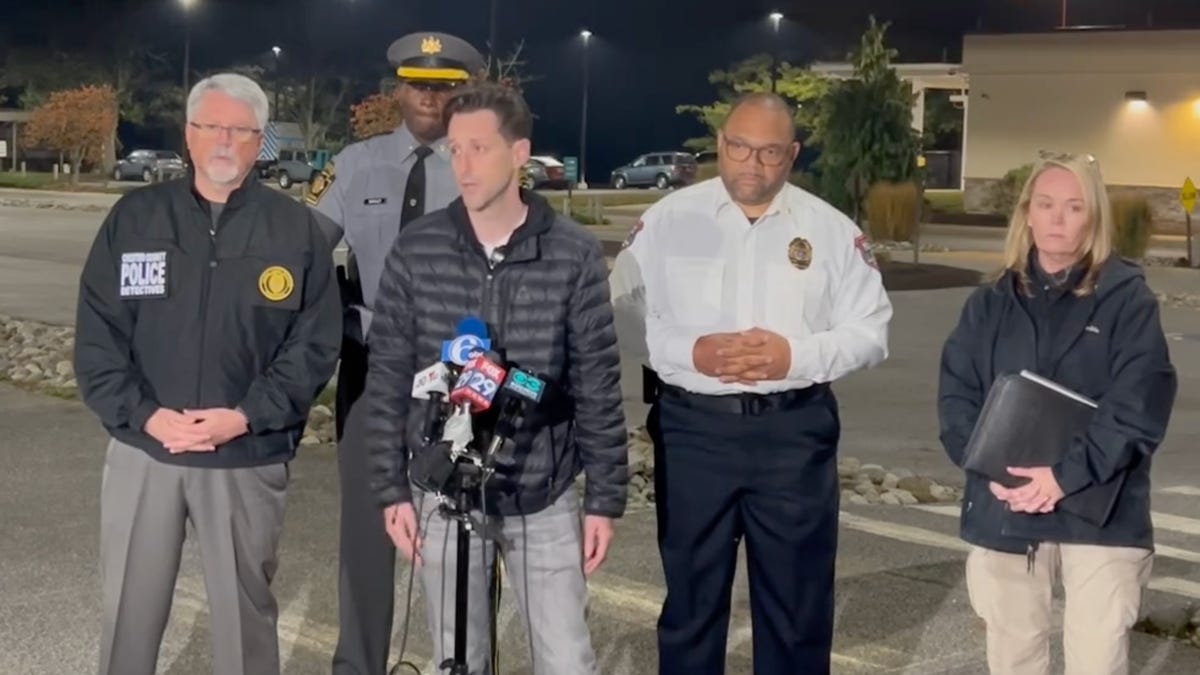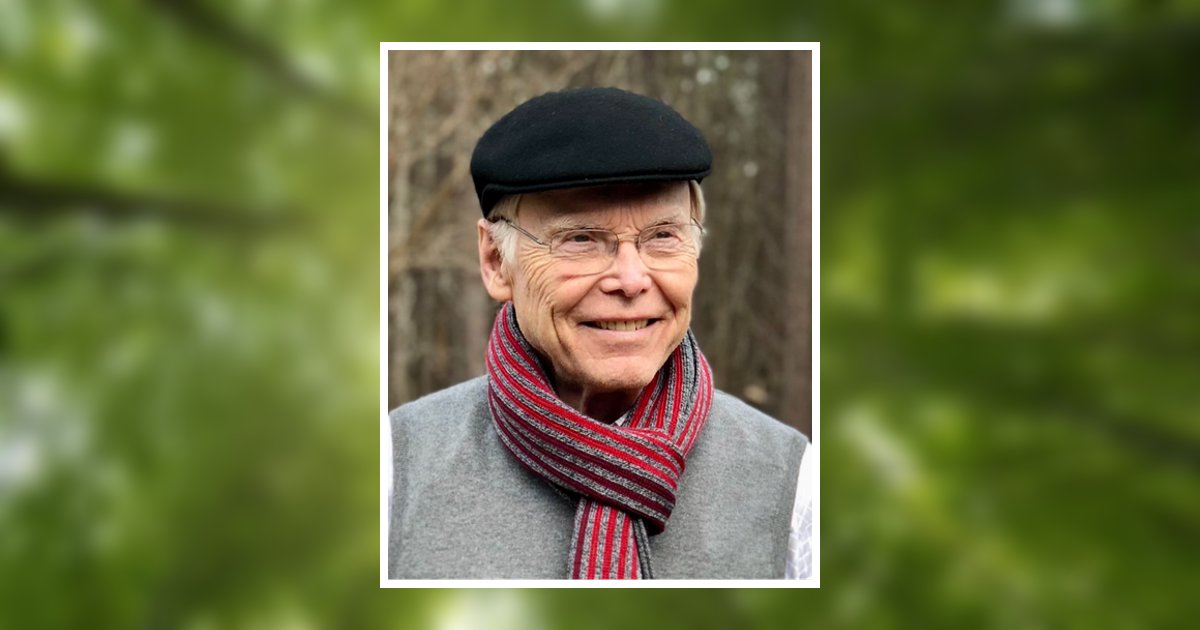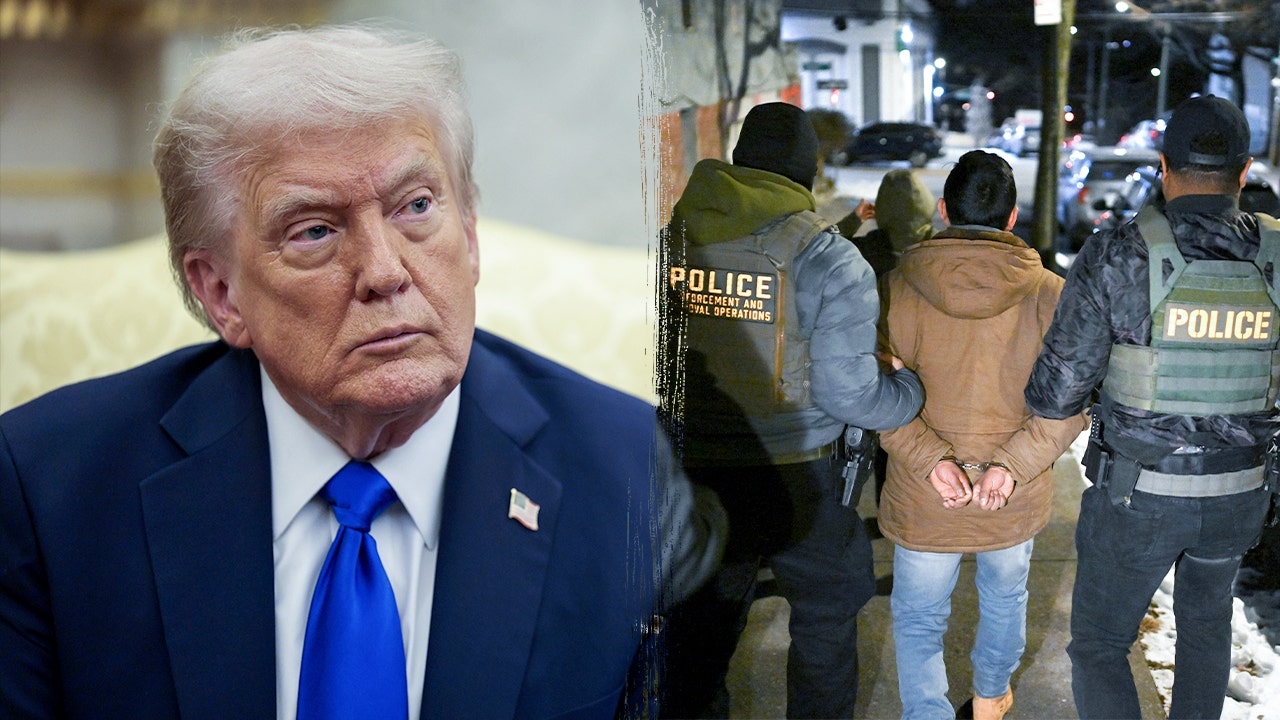Connecticut
Troconis jury sees smoke footage day Farber Dulos disappeared, hears about interview discrepancies

After addressing concerns that Michelle Troconis was allegedly reading court-sealed documents during her criminal trial in Stamford, the 23rd day of her trial continued Friday with testimony from a state police detective who interviewed Troconis three times in 2019.
In that final interview in 2019 — which the jury saw a recording of Friday — detectives point out inconsistencies in Troconis’ earlier statements to police and urge her to be honest.
Retired Connecticut Police Department Det. John Kimball returned to the stand Friday and first walked the jury through surveillance footage that showed a Jeep Cherokee and Chevrolet Suburban, which Troconis and her then-boyfriend, Fotis Dulos, were allegedly driving, going back and forth between their home at 4 Jefferson Crossing in Farmington and a property Dulos’ company owned at 80 Mountain Spring Road in Farmington on May 24. 2019, the day Jennifer Farber Dulos disappeared.
Judge in Troconis trial issues warning, delays contempt hearing over sealed custody report
In questioning Kimball about that footage, state prosecutor Sean McGuinness zeroed in on smoke that could be seen coming from a chimney at the home where Troconis was living with Dulos when his estranged wife went missing.
The jury had seen some of this video before, but this was the first time the chimney and smoke had been pointed out.
McGuinness asked Kimball if, in the three interviews Troconis did with investigators, she ever mentioned starting a fire that day — the Friday before Memorial Day weekend.
He said no.
According to weather reports, temperatures were in the high 60s to low 70s at about 7 p.m. that day.
“I don’t know too many people having a fire on a day like this,” McGuinness said.
Ned Gerard/Hearst Connecticut Media/Pool
Former Connecticut State Police Detective John Kimball returned to the stand Friday and first walked the jury through surveillance footage that showed a Jeep Cherokee and Chevrolet Suburban, which Troconis and her then-boyfriend, Fotis Dulos were allegedly driving on the day Jennifer Farber Dulos disappeared. (Ned Gerard/Hearst Connecticut Media/Pool)
Outside the courthouse Friday afternoon, Troconis’ defense attorney, Jon Schoenhorn, said that if the defense argues after the state rests its case, there “will be testimony that having fires is something she did regularly.”
Schoenhorn mentioned that Pawel Gumienny, an employee of Dulos’, testified earlier in the trial that he was helping Troconis bring up firewood to the house after Farber Dulos went missing and went on to say that the video of the fire was speculative.
Investigators did not search the home at 4 Jefferson Crossing until May 31.
“Whatever it is, whatever they are trying to claim from a couple of puffs of white smoke at various times on a very windy day again it is pure speculation just like a darkened figure riding a bicycle on Memorial Day weekend in the town of New Canaan,” Schoenhorn said, referencing surveillance video of a person in dark clothing riding a bike the morning of May 24.
Investigators allege that Dulos rode a bike to Farber Dulos’ home at 69 Welles Ave. in New Canaan, where he attacked her.
Kimball testified that smoke was seen coming out of the chimney on the east end of the house between 6:44 p.m. and 7:02 p.m., just before city surveillance cameras captured the couple driving along Albany Avenue in Hartford, where investigators allege Dulos was dumping evidence related to Farber Dulos’ disappearance.
Investigators tracked Dulos’ cell phone data to Albany Avenue, where surveillance video from Hartford’s city cameras shows Dulos driving his Ford F-150 Raptor and making stops to dump items into trash bins and a storm drain while Troconis drove in the passenger seat between 7:30 p.m. and 7:50 p.m.
Investigators combed through those trash bins and suctioned out the contents of the storm drain, finding altered license plates and blood-soaked clothes they believe Farber Dulos was wearing when she died. They also found zip ties, a box cutter, garbage bags, and other items, all with stains from a blood-like substance.
Troconis is charged with conspiring with Dulos to kill Farber Dulos, the mother of his five children with whom he was in the midst of a divorce and custody battle, and helping to cover up the crimes.
On June 2 and June 6, 2019, investigators interviewed Troconis about Farber Dulos’ disappearance. First at the New Canaan Police Department, then in her attorney’s office.
Lead detective testifies about discrepancies in Troconis’ timeline on day of Farber Dulos’ disappearance
The jury has seen video recordings of those two interviews, and on Friday saw part of her third interview, in which she admitted she hadn’t been entirely truthful during the first two.
“This is our third conversation and that’s two more conversations than most people have,” Kimball said at the start of the third and final interview on Aug. 13.
“We need you to be 100 percent honest,” said Connecticut State Police Det. Corey Clabby.
The detectives said that they wanted to give Troconis the chance to tell the truth and clarify some things.
“This really is an opportunity,” Kimball said.
He then asked Troconis: “Are you ready to admit that you weren’t 100% honest in the first two interviews?”
Troconis paused briefly, then said “Yes.”
In her earlier interviews, Troconis told investigators that on the morning Farber Dulos disappeared, she showered with Dulos. McGuinness asked Kimball about this while he was on the stand Friday. Kimball said that during the interview on June 2, 2019, Troconis indicated that “Fotis Dulos was there with her when she woke up, he entered the shower with her,” he said. And that she later saw him in his office.
But in August, she told investigators she did not see him until that afternoon.
“When you turned your alarm off in your bedroom, was Fotis there?” Clabby asked.
“No,” she replied.
“He was not there?” he clarified.
“No,” she said
“You didn’t take a shower with him?”
“No,” Troconis answered.
Ned Gerard/Hearst Connecticut Media/Pool
Former Connecticut State Police Detective John Kimball watches video of his questioning of Michelle Troconis as he testifies on Friday at Stamford Superior Court. (Ned Gerard/Hearst Connecticut Media/Pool)
In the video, Troconis went on to say she did not see him at all that morning.
“I didn’t see him in the room, in the shower, or the room, I didn’t,” she said. “I did not see him in the morning in the house.”
She said during the interview that maybe she had just assumed he was home.
“Back then I always thought he was in the house but thinking I never saw him, I never heard his voice. So obviously he wasn’t … probably he wasn’t in the house.”
Kimball on Friday also testified that on June 6, 2019, Troconis said she had not seen Dulos’ phone that morning. She thought Dulos had it with him, she’d said. But in the third interview, that changed.
“The defendant just indicated that she saw Mr. Dulos’ phone in the Fore Group office, correct?” Kimball asked after pausing the video of the interview.
“That’s correct,” Kimball said.
Later in the interview, Clabby pressed Troconis about the phone being left at home.
He asked her if she thought it was odd that Dulos left his phone at home “the day his wife goes missing” and urged her to tell the truth.
“There’s no way you just didn’t know,” he said.
Detectives then told Troconis that she was facing multiple years in prison.
“Help yourself and tell us what you know, because we all believe you know a lot more.”
During the part of the video the jury saw Friday, detectives also pointed out other inconsistencies in Troconis’ account of May 24.
In her June 2019 interviews, Kimball said Troconis never mentioned answering a call to Dulos’ phone that morning. But in the August 2019 interview, she described answering a call from Dulos’ friend in Greece — a call that investigators learned was prearranged at the urging of Kent Mawhinney, Dulos’ lawyer who is also charged as a co-conspirator in Farber Dulos’ death.
They also asked Troconis at length about whether she briefly had the keys to Gumienny’s Toyota Tacoma that afternoon. That truck has dominated a good portion of testimony in her trial, as investigators allege Dulos drove that truck to New Canaan and back on the day Farber Dulos went missing.
When Gumienny took the stand, he testified that he saw the keys to his Tacoma handing from the passenger door of his truck at 80 Mountain Spring Road that afternoon. He left for a few minutes, and when he came back with Dulos, the keys were gone. He said Dulos called Troconis and she brought the keys back. In the video shown Friday, Troconis admitted to having the keys but said they were in the Jeep she was driving.
Detectives told her they knew that was not true.
She stumbled over an answer but ultimately said she didn’t know how she had ended up with the Tacoma keys.
They also highlighted other details that Troconis did not tell detectives about in the first interviews, like how she picked Dulos up from a car wash in the days after Farber Dulos went missing.
Outside the presence of the jury Friday afternoon, attorneys went back and forth in a heated exchange regarding witnesses the defense is expected to call to the stand next week to testify about memory.
McGuinness raised concerns that the defense had not provided reports about the witnesses’ expected testimony.
The defense countered that the court would be denying Troconis her constitutional right to present a defense if they were prevented from calling those witnesses, as memory is “the sole basis of the defense.”
McGuinness said that because the defense had provided them with the witnesses’ lengthy resumes but not reports regarding their testimony, the state would not have enough time to prepare to cross-examine those witnesses.
“We’re going to get a report dumped on our lap on Monday night and we’re going to be expected to cross next week and it’s not fair,” McGuiness said.
Judge Kevin A. Randolph ruled that the defense will be required to send the court reports from the witnesses by midnight Friday.
Troconis’ trial is set to resume at 10 a.m. Tuesday after Monday’s Presidents’ Day holiday.

Connecticut
CT lawmakers plan special session as families worry about SNAP, other federal aid

As the federal government shutdown rolls into its second month, questions mount for people relying on a range of federally-funded benefits.
Connecticut lawmakers are negotiating the parameters of a bill to set aside as much as $500 million to help households relying on various assistance programs and subsidies.
“Right now, my number one priority on a timely basis is taking care of people who were hit and hit hard by this shutdown,” Gov. Ned Lamont (D-Connecticut) said during a press conference at Hands on Hartford.
There’s bipartisan support for a response to several concerns over federal funding, including:
- The U.S. Department of Agriculture is paying for half the monthly benefits in November, leaving questions about when those payments will come and what might happen if the shutdown continues into December.
- The shutdown continues as Democrats and Republicans disagree over the future of subsidies for people who buy health insurance through Affordable Care Act exchanges.
- And stats have not received money from the Low-Income Heating Energy Assistance Program, or LIHEAP, because Congress has not approved a spending plan.
Democratic and Republican leaders have said the goal is to put money aside in case federal funding for specific benefits are cut or frozen.
The intent is to make sure benefits continue through early February, when lawmakers return to the capitol. There is debate about whether the money should come from the Rainy Day Fund or a surplus within the existing budget.
Either way, lawmakers said they want to help families relying on programs like SNAP.
“I think we should have started figuring it out two weeks ago because there were some people who were optimistic,” Rep. Vincent Candelora (R-Minority Leader) said. “I just don’t see the shutdown ending anytime soon.”
That could include making sure households receive their full benefit and setting aside money in case the shutdown drags on and the USDA fails to fund the program again in December.
Lamont said Monday that Connecticut could copy what states like Vermont, Virginia and Utah have done, putting money onto the EBT cards SNAP beneficiaries already have.
“It was a bouncing ball there for a while, we have a pretty good idea now,” he said. “We will be able to use the EBT card. We can potentially do cash on that if this thing goes a lot longer.”
The state did give $3 million to Foodshare last week, helping the organization purchase six million additional meals.
Those meals will be distributed over the next two weeks through Foodshare’s existing network, starting Monday.
Janet Bermudez, executive director of Hands on Hartford, said families coming to her pantry are looking everywhere they can for help after not receiving benefits on Saturday.
“Folks that are not receiving their SNAP benefits are becoming anxious, desperate,” she said, estimating the pantry saw a 20% increase in demand even before Saturday.
She said families, and not just those on SNAP, have been asking for more help as they also pay more for electricity, housing and other costs.
Bermudez said that’s one of the reasons pantries alone can’t make up for the assistance families are losing through SNAP.
“What we’re able to give out is about 40 pounds of groceries, and that, I know, does not feed a family for a month,” she said.
Connecticut
This Artistic Connecticut Airbnb With A Pool And Zen Vibes Was Once Home To Mount Rushmore’s Creator – Islands

The charm of an Airbnb lies in its promise of a one-of-a-kind stay. From treehouses in Texas to isolated cottages in Iceland, Airbnb has built its reputation on offering distinctive, self-catering accommodations. Among these unique stays is a striking property in the heart of Stamford, Connecticut, known as the ZenHouse.
Beyond its mid-century aesthetic, this artistic Airbnb was once home to the creator of Mount Rushmore. American sculptor Gutzon Borglum, who lived here while creating some of his most celebrated works, famously carved the giant faces of four U.S. presidents along the stunning South Dakota road trip route. Today, the ZenHouse is a retreat for guests, with a sparkling pool, zen vibes, and an impressive 4.95-star rating from over 250 reviews.
The host is an Airbnb Superhost; in other words, a trusted, top-tier host with a solid track record. As of October 2025, the host holds a perfect five-point rating for both communication and check-in, and guest reviews echo this sentiment. One reviewer, Mourad, wrote: “Olga is an amazing host — thoughtful, kind, and generous. From offering an early check-out to avoid traffic to bringing us pastries and tea, she truly went above and beyond.” Another guest from fall 2025 added that she ‘has so much love and knowledge of this property and its history’.
The host has clearly gone above and beyond to make every detail count. Upon arrival, guests are invited to join a guided meditation walk, a Japanese tradition to help acquaint you with the space. Inside, thoughtful touches like board games, books, exercise equipment, a zen garden, and complimentary tea all contribute to the home’s lived-in charm.
A mid-century guest cottage with a monumental garden
The house itself is modest and unassuming, especially considering the colossal national artistic achievement of its former owner. It’s technically a guest cottage on a 3.5-acre estate shared with the current owners. The home was built around 1955 in classic mid-century modern style. The single-story, open-concept layout has one bedroom and two bathrooms, ideal for two guests.
Interiors embrace neutral tones, wooden touches, and expansive glasswork characteristic of mid 20th-century architecture. There is even a subtle Japanese aesthetic, complemented by artwork created by the owners themselves. Guests are encouraged to channel their own creativity, too, with an easel, fresh canvas, and paint provided for each new arrival.
The garden, on the other hand, is anything but small. Set in a wooded landscape that borders the Rippowam River and a small pond home to a resident swan named Gatsby, the grounds are easy to get lost in. The guesthouse sits next to the heated swimming pool, available for an additional fee of $100 per day during summer months.
The private, fenced-in gardens offer guests access to a fire pit, outdoor dining area with a BBQ, and pool loungers. On-site parking is free, and a private entrance allows you to come and go as you please. It’s also worth mentioning that gardeners tend to the property on Tuesday mornings, while pool cleaning happens every Wednesday.
What makes this property stand out is its versatility. While the cottage comfortably sleeps two, the kitchen is equipped for a larger group. Although guests need to get permission to invite visitors onto the property, the images suggest that you can host intimate dinners, provided the atmosphere stays relaxed and respectful. The hosts are also happy to elevate the experience with private chef dining and flower arrangements.
Everything you need to know about location of ZenHouse
ZenHouse is set in a quiet corner of Stamford, a picturesque, yet lively New England city that was once considered a residential suburb of New York City, just 40 miles from The Big Apple.Stamford is now a major business hub, home to financial headquarters and publishing firms.
Despite its proximity to Manhattan, this Airbnb feels worlds away. It’s tucked away in a leafy suburb of North Stamford, practically surrounded by towering trees and gardens. Adding to the seclusion, the pool sits between two massive stone walls, remnants of Borglum’s former outdoor studio. He designed the space to be almost completely surrounded by the river, creating a private and inspiring setting for his work. At the time, you had to cross a drawbridge to get to his studio.
The neighborhood in general is a hotspot for golf and tennis, which means plenty of open green spaces and fresh air. Location-wise, it’s conveniently within 3 miles of the Stamford Museum and Nature Center, the Bartlett Arboretum and Gardens, and Sterling Farms Golf Course. For travelers, the closest international airport is LaGuardia, which is just 36 miles from the property.
John F. Kennedy is also pretty close — about an hour away. Both JFK and LaGuardia airports connect with just about every major U.S. city as well as plenty of international destinations. The house comes fully equipped with all the usual necessities, but doesn’t include a washer. That said, there is a laundromat nearby, as well as a center with a Trader Joe’s and CVS just across the Merritt Parkway.
Connecticut
The oldest restaurant in CT is more than 200 years old. How to eat there

See USA TODAY Network’s Restaurants of the Year 2024
Our local journalists know the food scene in their markets better than anybody. We’ve leveraged their expertise to name our Restaurants of the Year.
You know a restaurant is quality when it’s lasted for more than 250 years.
Twelve years older than the United States itself, the oldest restaurant in Connecticut first opened for business in 1754 in Woodbury Connecticut. . First built by Rev. Anthony Stoddard as a family house in 1734, in 1754 it was converted to a business and inn, the oldest in the state.
This colonial site has remained operational as an inn and tavern for the 250+ years its original opening, despite one brief pause before WWII. Originally called the Curtis House, the site has undergone many name changes, landing on The 1754 House in 2020.
Want to have a dining experience with over 200 years of history? Here’s all the details about eating at The 1754 House today.
About dining at 1754 House
Today, the colonial inn has two dining areas – the 1754 Dining Room, the main dining spot, and The Flat Five, a Blues tavern with pub fare and live music.
While the formal dining room and relaxed tavern differ in atmosphere, the menus are largely the same. 1754 House serves up American comfort food classics with New England roots.
An extensive wine list joins a creative lineup of craft cocktails, including New England-inspired mouthfuls like the Maple-Bacon Old Fashioned.
How to eat at 1754 House
Flat Five Blues Tavern is open Wednesday-Saturday from 5-10 p.m., and the 1754 Dining Room is open Tuesday-Thursday from 4-9 p.m., Friday-Sunday from 11:30 a.m. to 9 p.m. and Sunday from 11:30 a.m. to 2 p.m.
The 1754 House is located at 506 Main St. South in Woodbury.
-

 Milwaukee, WI7 days ago
Milwaukee, WI7 days agoLongtime anchor Shannon Sims is leaving Milwaukee’s WTMJ-TV (Channel 4)
-

 News1 week ago
News1 week agoWith food stamps set to dry up Nov. 1, SNAP recipients say they fear what’s next
-

 Alabama1 week ago
Alabama1 week agoHow did former Alabama basketball star Mark Sears do in NBA debut with Milwaukee Bucks?
-

 News1 week ago
News1 week ago1 dead, 6 injured in shooting at Lincoln University homecoming festivities
-

 Austin, TX1 week ago
Austin, TX1 week agoDia De Los Muertos Austin: Parades, Altars & Events
-

 Culture1 week ago
Culture1 week agoVideo: Tyler Mitchell Breaks Down Three Photos From His New Book
-

 Culture6 days ago
Culture6 days agoVideo: Dissecting Three Stephen King Adaptations
-

 Seattle, WA7 days ago
Seattle, WA7 days agoFOX 13’s Aaron Levine wins back-to-back Jeopardy! episodes


















